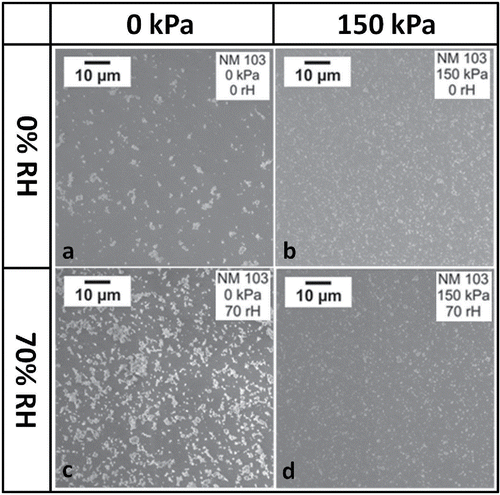Figures & data
Figure 1. Transmission electron microscopy analysis of particle morphology for the hydrophobic (NM-103) and hydrophilic (NM-104) TiO2 aerosols.
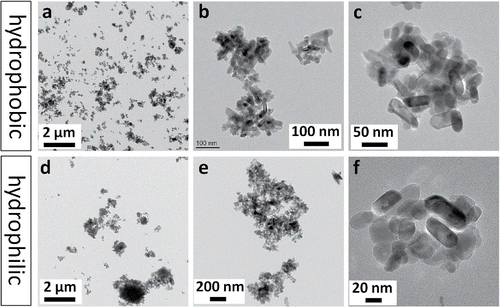
Figure 2. Particle number size distributions of the aerosols generated using two types of nanopowder: left, hydrophobic TiO2; right, hydrophilic TiO2 (no critical orifice, RH = 0%).
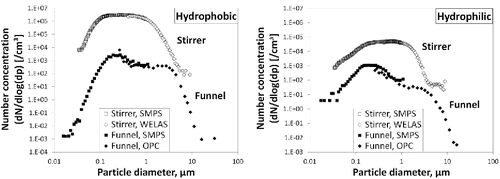
Figure 3. Effects of a pressure drop and relative humidity on the mean particle diameter and total number concentration of hydrophobic (NM-103) and hydrophilic (NM-104) TiO2 aerosols. Total particle number concentrations are shown using relative scales, compared to the standard test conditions (0% RH and 0 kPa).
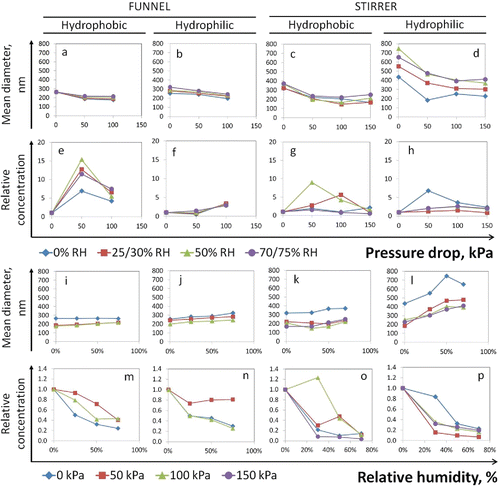
Figure 4. Effects of pressure drops on particle number fractions in three different size ranges (<100 nm, 100–350 nm, and >350 nm) for hydrophobic (NM-103) and hydrophilic (NM-104) TiO2 aerosols.
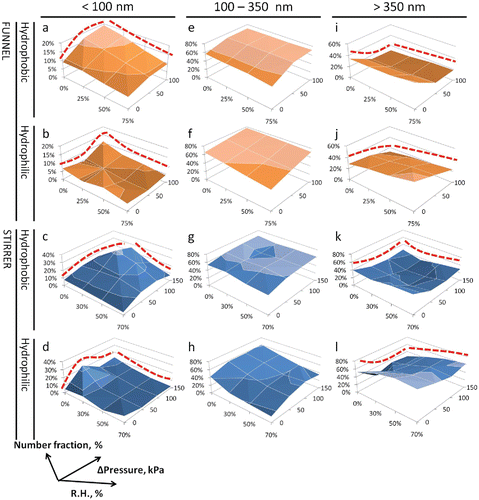
Figure 5. Changes in particle numbers (%) in individual size channels (measured by SMPS) by increasing 1% relative humidity (left) and by increasing 1 kPa pressure drop (right). The relative changes (%) were obtained by dividing absolute changes by total particle numbers in each size channel. Particle size distributions at 0% RH/100 kPa (open circles) are also presented for the purpose of comparison. Only statistically significant values are plotted (p < 0.05). Error bars represent 95% confidence intervals. Data are from the funnel system using hydrophobic TiO2.


